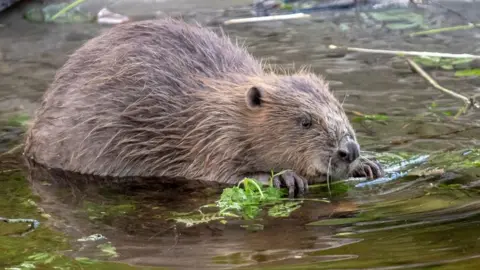Beavers could return to Cairngorms this autumn
 Elliot McCandless
Elliot McCandlessBeavers could return to the Cairngorms this autumn as part of efforts to boost their population.
The animals died out in Scotland about 400 years ago but were reintroduced in 2009.
The Cairngorms National Park Authority (CNPA) will speak to members of the public about a number of possible release sites.
The sites include land owned by Danish billionaires Anders and Anne Holch Povlsen.
Beavers are valued for their impact on ecosystems and abilities as "natural engineers".
Under the plan, some beavers already living in and around the Tay could be trapped and moved to the upper area of the River Spey.
Potential release sits are at Rothiemurchus, near Aviemore, RSPB Scotland's Insh Marshes nature reserve and land managed by Wildland Cairngorms - owned by the Holch Povlsens.
Its estates include Gaick, Glenfeshie and Kinrara.
 AFP
AFPCNPA is holding a series of public events on the proposal in August and September in Kincraig, Nethybridge, Kingussie, Aviemore, Grantown-on-Spey in the Highlands and Aberlour in Moray.
A licence application to reintroduce the beavers would need to be submitted to Scotland's nature agency, NatureScot, before the beavers could be released this autumn.
Dr Sarah Henshall, CNPA's head of conservation, said: "To be successful in this application we need to show that there is enough suitable habitat for a self-sustaining population of beavers to live in the park."
She said the project would also have to show there were enough landowners willing provide locations for beavers, and a management plan was in place for the animals.
Rothiemurchus estate and RSPB Scotland said they supported the project.
Thomas MacDonell, Wildland Ltd director of conservation, added, "Our habitat restoration work over the last 20 years has resulted in one of our sites being considered suitable as a beaver release site - this is a welcome recognition of our contribution to a healthier environment.
"We are looking forward to welcoming beavers to the Spey catchment as it is expected that they will bring many positive outcomes."
Beavers already found in parts of Scotland include animals reintroduced under licence, and others illegally released at rivers and lochs.
Legislation was introduced by the Scottish government in 2019 to make beavers a protected species, meaning it is illegal to kill or disturb them.
